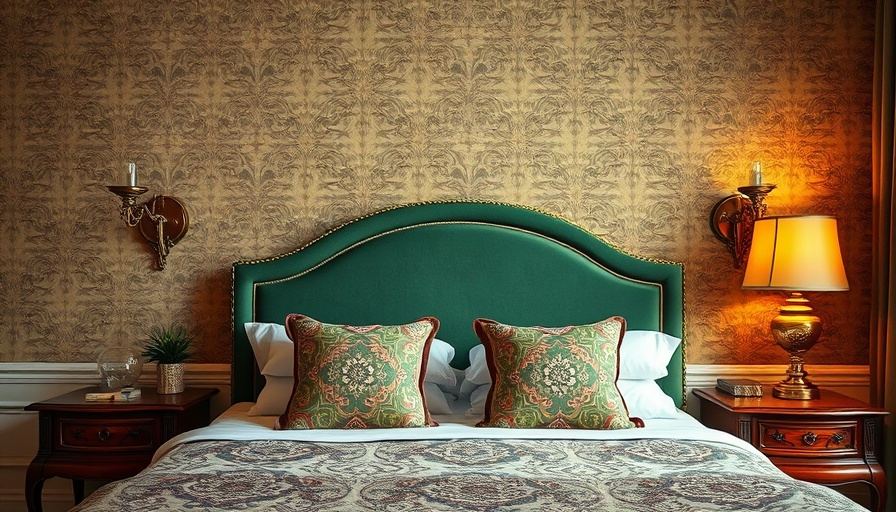
Transforming Small Spaces: Cozy Bedroom Design Ideas
In today’s fast-paced world, our bedrooms should serve as appealing retreats—sanctuaries that envelop us in comfort and style. Yet, many struggle with small spaces that feel less like a haven and more like a hassle. If you find yourself battling cramped corners and sparse square footage, don’t despair; clever design choices can turn a tiny bedroom into a cozy oasis.
The Power of Color Choices in Small Bedrooms
When it comes to creating a cozy atmosphere, color choice is paramount. Embracing warm, nature-inspired hues such as deep greens, muted browns, or soothing grays can create a welcoming ambiance without overwhelming your senses. This is especially relevant for bedrooms, as the right palette can evoke feelings of calm and serenity, essential for relaxation.
For instance, opting for a serene beige on the walls can make the space feel light and inviting. Additionally, contrast these shades with vibrant accents—think plush pillows or artwork—to infuse personality without compromising the overall calming effect.
Layering Textures for a Warm Feel
Texture plays a crucial role in making a bedroom feel cozy, particularly in smaller spaces where bold colors or overcrowded decor might not be feasible. Incorporating a variety of tactile materials—think soft knit blankets, plush rugs, and crisp cotton sheets—invites warmth, adding depth and softness to your design.
As expert Kristin Hohenadel suggests in her article, layering can also be applied through various elements like oversized throw pillows on a bed, or textured wall coverings that draw the eye upward, making the space feel more expansive and inviting. No matter how tiny your sleeping quarters may be, a well-curated combination of textures can make a significant impact.
Using Strategic Furniture Choices to Maximize Space
For those residing in small apartments or cozy homes, every square inch counts. Prioritizing multifunctional furniture can effectively free up space while ensuring no comfort is sacrificed. A storage bed, for example, can house your linens and clothes, eliminating the need for bulky dressers. Similarly, opting for wall-mounted shelves can provide necessary storage without encroaching on your floor space.
The addition of a bookcase headboard can also merge functionality with style, allowing for convenient storage while elegantly framing the bed. These smart design strategies ensure you can enjoy a stylish and efficient bedroom setup, even in tight quarters.
Let There Be Light: The Role of Lighting in Cozy Spaces
Lighting choices can fundamentally alter the mood of a room. Small bedrooms can feel claustrophobic without adequate illumination, so layering your lighting through ambient, task, and accent fixtures is vital. Consider using sconces instead of table lamps to save precious surface space, and incorporate dimmer switches for versatility.
The key is to create a warm glow throughout the room, enhancing the overall atmosphere while promoting tranquility. In the same vein, strategically placed mirrors can amplify natural light, making your space appear larger and brighter. Positioning these reflective surfaces opposite windows allows light to bounce around the room pleasantly.
Incorporating Personal Touches for a Unique Style
Even in small spaces, individuality can shine through. Personal items like framed photographs or meaningful decor can add a layer of warmth, making a space feel distinctly yours. Unlike generic decor, personal touches evoke emotional connections, thus enhancing the overall coziness of the room.
Hohenadel recommends displaying family photos or souvenirs from travels, creating not only visual interest but also evoking cherished memories. A small gallery wall featuring these personal artifacts can make your bedroom feel like a comforting embrace.
Designing with Future Trends in Mind
The trends in interior design continuously evolve, with a current emphasis on sustainability and adaptability. Investing in timeless furniture pieces and decor that can transition through various styles—from bohemian to modern—will enhance your bedroom’s longevity while catering to your evolving aesthetic preferences.
In addition to aesthetic choices, considering eco-friendly materials that promote sustainability can create a healthier living environment and foster a sense of responsibility towards our planet.
Ultimately, transforming your bedroom into a cozy retreat doesn’t require a complete overhaul. By implementing intentional design strategies—such as color palettes, layered textures, practical furniture, effective lighting, and personal decor—you can cultivate a beautiful and comfortable space that caters to your needs. It’s time to embrace the beauty of small spaces and make the most of every square inch!
As you embark on your bedroom revamp journey, remember that thoughtful design will not only enhance aesthetics but also contribute to a sense of well-being. For more design insights and tips, explore our extensive resources on creating your perfect home sanctuary.
#SmallBedroomDesign, #CozyBedroom, #InteriorDesign, #SpaceSavingFurniture, #BedroomLighting
 Add Row
Add Row  Add
Add 




Write A Comment